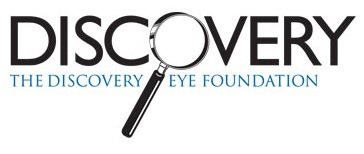Giving and getting help for people with vision loss
 The path from getting a diagnosis of eye disease to getting what experts call “helpful help” often goes something like this:
The path from getting a diagnosis of eye disease to getting what experts call “helpful help” often goes something like this:
- Person gets news from doctor he/she has age-related macular degeneration (AMD) and is told there is no cure.
- Person goes home, where both she/he and loved ones become consumed with finding a cure. (This step usually involves a lot of time-consuming Googling.)
- Loved one steps in and says: “We have to do something. You can’t live alone!”
- Person shuts down; loved one gets frustrated.
- Person and/or loved one looks for help.
“This is not a good path from news to help, but people seem to follow it every time,” says Maureen Duffy, CVRT, LVT, an editor for Journal of Visual Impairment & Blindness, a writer and blog editor for VisionAware, and author of Making Life More Livable: Simple Adaptations for Living at Home After Vision Loss. “There seems to be about a 7-year gap between a diagnosis of eye disease and getting ‘helpful help’ — help that’s really going to make a difference.”
There is often a lack of understanding — by both the person and the loved ones — of what a diagnosis of eye disease really means. In the case of AMD, people always maintain some peripheral vision, and it can be difficult to understand the effect of “central vision loss” on day-to-day life.
“Understanding is the most important thing a loved one can do,” says Judi Delgado, director of the Macular Degeneration Partnership (MDP). “The ideal place for a caregiver to start being helpful is in the doctor’s office. A loved one can offer to accompany the person and take notes; this helps both parties understand the disease and what really needs to happen.”
“‘Give a man a fish and you feed him for a day; teach a man to fish and you feed him for a lifetime.’ That proverb holds true for a person who loses their vision,” Delgado says. “They may need to learn new ways to do some things, but they can still do them. It doesn’t help them if others try to take over or do things for them. It’s important to understand that the person is already losing so much; if loved ones try to take over their lives, it just adds to the loss of independence.”
“The least helpful thing a loved one — usually an adult child of an older person — can say to a person facing vision loss is, ‘You can’t live by yourself anymore.’ That’s just not true,” Duffy says. (Read Three Tips for Caregivers Helping People with Low Vision on our blog).
Everybody needs help in a different way, and both Duffy and Delgado say foisting “care” on grown-ups as if they were children is very common — and not very helpful. The way to help adults is different from the way to help children (for more on this, visit our recent blog post, Using Andragogy to Help People with AMD), and Duffy advises to keep the following in mind:
- Adults already know how to do things. If they already know how to cook, they don’t need to learn to learn how to cook from scratch; they just need to make adaptations.
- Adults are reactive learners. They are ready to learn when they decide they want to do something to improve their daily lives. They don’t need to learn braille in preparation for going blind in the future; they can read larger and larger print for as long as they are able to do so.
- Adults are self-directed. They want to decide things for themselves — and what they want may not be what family members want.
Caregiving is not easy, nor is watching a loved one struggle. But people will accept help only when they are ready to do so. If a person isn’t ready, any attempt to help — no matter how well-intentioned — may be rebuffed.
Recently, Delgado reports, a woman called the MDP hotline seeking help for her husband, who was having difficulty coping with his AMD and had become depressed. She asked to have him added to the MDP e-mail list for announcements. “He was furious,” Delgado says. “He insisted on being taken off the list. But, eventually, his wife convinced him to come to our Santa Monica support group. He sat there with his arms crossed, asking me the most challenging things he could think of, just to test me. Now, he calls me regularly to ask questions and, sometimes, just to talk about what he is going through. He needed to find his comfort zone.”
“It’s OK to ask, ‘How can I help?’” Delgado says. “But really being aware and empathetic is essential. It is a blow to people who were independent to have to rely on others; it can be really hard to ask for or accept help.”
There are subtle ways to make it easier for both sides. “Instead of saying, ‘Here, let me do that for you,’ say, ‘May I help you with that?’” Delgado advises. “Take baby steps. Say, ‘I read about this cool magnifier; would you like to try something like this?’ Don’t hit them over the head with a catalog of low-vision gadgets. Do small things until they are more receptive.”
When a person is ready for “helpful help,” there is a plethora of ways to get what they actually want and need. Ask the eye doctor for referrals to trained professionals who provide “instructional intervention,” such as a low-vision therapist (LVT), an orientation and mobility (O&M) specialist and/or a vision-rehabilitation therapist (VRT). (Learn more about vision-rehabilitation services and what these professionals do for people with low vision on our recent blog post.)
Caregivers can offer to help research appropriate resources, especially if your doctors don’t have many suggestions. Local low-vision agencies can be valuable for this, as can organizations such as MDP and VisionAware, which has an online directory of services that is searchable by category of need and location.
Many low-vision centers offer classes for caregivers and others on topics such as “sighted-guide techniques” to help those with vision impairments get around. (Read more about sighted-guide techniques.)
Among the most helpful things a loved one can do is to locate a nearby vision-loss support group. “It may take them a little while to warm up to the idea,” Duffy says, “but many adults get the most help from a peer group, where they can feel comfortable talking about what is happening right now and get solutions from others who may have gone through the same thing.” (Read more about the power of support groups for AMD.)
Delgado, who runs three AMD support groups in Southern California, concurs: “Support groups are very personal and very direct. Often, a caregiver will drop off a loved one, so the loved one will feel comfortable sharing. But caregivers also are welcome to come by themselves. It is a great place to share their own concerns and get advice or input from those dealing with the same things as their loved one. At the very least, the other attendees may be pretty straightforward about telling them what their own adult children and other caregivers did wrong, so you can learn from their mistakes!”
For additional resources, visit the “For Family & Caregivers” section on the MDP website.

